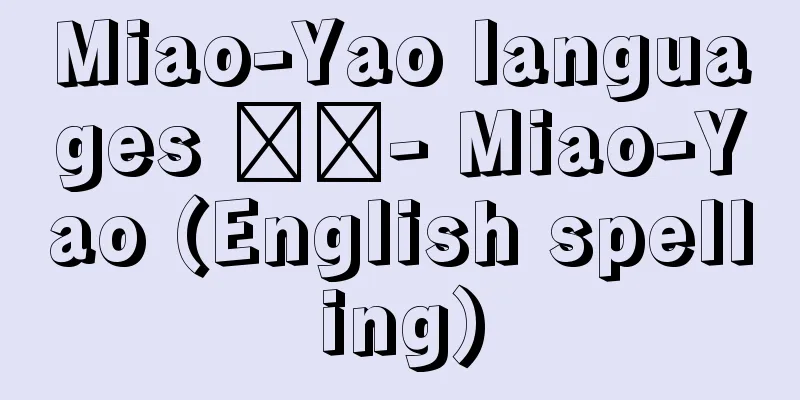Gwangju

|
It is the capital of Jeollanam-do, South Korea, and one of the five major metropolitan cities. It is located at the top of the fan of the Gwangju River Plain, a tributary of the Yeongsan River, and is on the border between the northeastern part of the Naju Plain and the mountainous region. Mudeungsan Mountain (1,187m) rises to the north. It has been the political and cultural center of Jeolla Province since the Three Kingdoms period, and is famous for its citizens' enthusiasm for education. Silk-reeling and spinning industries are well developed. During the Japanese colonial period, it was a base for increasing rice production and colonial agricultural promotion of cotton and sericulture, but ethnic consciousness was strong, and in 1929 the anti-Japanese Gwangju Student Incident occurred, which spread throughout Korea. It is also known for the Gwangju Incident in May 1980, when martial law troops used force to suppress demonstrations protesting a military coup, resulting in many casualties. Originally a city centered on agriculture, the city has seen notable development in electronics, machinery, and textile-related industries, such as the Advanced Science Industrial Complex, in recent years. In the 1970s, it also became the junction of the Honam Expressway (Daejeon - Gwangju) and the Namhae Expressway (Busan - Gwangju), and later the 88 Olympic Expressway linking Daegu was added, enhancing its status as a transportation hub. The Gwangju Biennale, which has been held since 1995, is a world-famous international contemporary art exhibition. Attended by 1,475,745 people (2010). →Related items Jeollanam-do | Hwasun Source : Heibonsha Encyclopedia About MyPedia Information |
|
韓国,全羅南道の道都,五大広域市の一つ。栄山江の支流光州川平野の扇頂部にあり,羅州平野の北東部と山岳地帯の境界にある。北側に無等山(1187m)がそびえる。三国時代から全羅道の政治・文化の中心地で,市民の教育熱の高いことで有名。製糸・紡績工業が発達している。日本の植民地時代には米の増産や,棉花,養蚕の植民地的な農業奨励の拠点となったが,民族意識が高く,1929年反日光州学生事件が起こり,朝鮮全土に波及。また1980年5月,軍事クーデタに抗議するデモ隊を戒厳軍が武力鎮圧し,多数の死傷者を出した(光州事件)ことでも知られる。もともとは農業などを産業の中心とする都市だったが,近年は先端科学工業団地など,電子・機械・繊維関係産業の発展が目立つ。また,1970年代に湖南高速道(大田〜光州)と南海高速道(釜山〜光州)の接点となり,のち大邱と結ぶ88オリンピック高速道も加わって交通の要衝としても地位を高めた。1995年から開催されている光州ビエンナーレは,国際現代美術展として世界的に有名。147万5745人(2010)。 →関連項目全羅南道|和順 出典 株式会社平凡社百科事典マイペディアについて 情報 |
Recommend
Basic currency
…(2) It is used as the standard of value when exc...
EL - El
Abbreviation for Electronic Luminescent. A physica...
Ulmus parvifolia (English spelling) Ulmus parvifolia
… [Toshio Hamatani]. … *Some of the terminology t...
Keśava (English spelling) Kesava
…The ancient name of the temple is Somanāhapura. ...
Swedenborg, Emanuel
Born: January 29, 1688 in Stockholm [died] March 2...
Share - Share
...In particular, midyear and year-end gifts beca...
Capacity to sue - capacity to sue (English spelling)
(1) Under the Civil Procedure Act, the capacity re...
Mulhacen, Cerro de (English spelling) Mulhacen Cerrode
… [Naoko Kurihara]. … *Some of the terminology th...
Red-eared slider - Red-eared slider
A turtle of the Eridan family. There are 12 subspe...
Kanji - Kansu
〘Noun〙 (also "kanzu". "Su" is ...
Mitsukuri Rinsho
A Western scholar and legal scholar in the late E...
synovial bursa (English spelling)
…Therefore, in general, spindle muscles have a wi...
Lord Wellesley - Wellesley Today
…An educational institution established in Calcut...
Forensic psychiatry
It is an area of psychiatry related to laws such...
The Hundredth Year
Rakugo. Also known as "The Head Storekeeper&...









